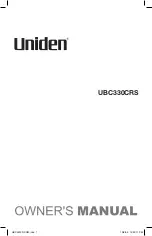
A.3 Bus Phases
Appendix A-19
a.
Synchronous transfer from target to initiator
If the I/O signal is true (transfer to the initiator), the target shall first drive the DB (7-
0, P) signals to their desired values, wait at least one deskew delay plus one cable skew
delay, then assert the REQ signals. The DB (7-0, P) signals shall be held valid for a
minimum of one deskew delay plus one cable skew delay plus one hold time after the
assertion of the REQ signal. The target shall assert the REQ signal for a minimum of
an assertion period. The target may then negate the REQ signals within one hold time
of the transition of the REQ signal to true. The initiator shall then respond with an
ACK pulse.
b.
Synchronous transfer from initiator to target
If the I/O signal is false (transfer to the target), the initiator shall transfer one byte for
each REQ pulse received. After receiving the leading edge of a REQ pulse, the
initiator shall first drive the DB (7-0, P) signals to their desired values, delay at least
one deskew delay plus one cable skew delay, then assert the ACK signal. The initiator
shall hold the DB (7-0, P) signals valid for at least one deskew delay plus one cable
skew delay plus one hold time after the assertion of the ACK signal. The initiator
shall assert the ACK signal for a minimum of an assertion period. The initiator may
then negate the ACK signal and may one hold time of the transition of the ACK signal
to true.
REQ
DB
Deskew Delay +
Cable Skew
Deskew Delay + Hold Time +
Cable Skew Delay
I/O
ACK
DB
Deskew Delay +
Cable Skew
Deskew Delay + Hold Time
+
Cable Skew Delay
I/O
Summary of Contents for M3097DG
Page 1: ...C150 E103 01EN M3097DG Image Scanner OEM Manual ...
Page 2: ......
Page 4: ...This page is intentionally left blank ...
Page 44: ...3 3 Optional image function 3 23 ...
Page 67: ...5 4 Consumable 5 13 Two rollers are included Figure 5 4 Pick roller ...
Page 70: ...6 3 Figure 6 1 Jam clearance ...
















































